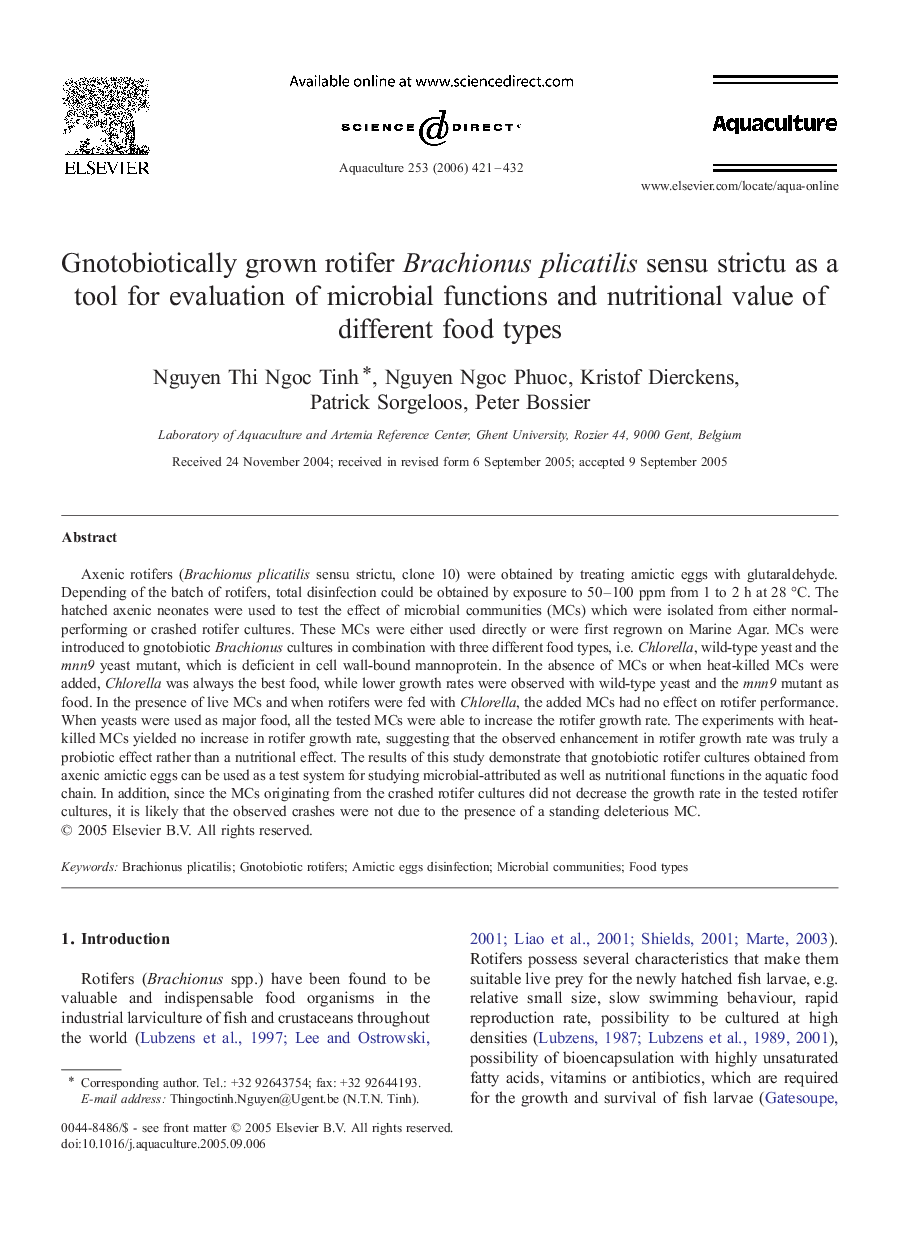| Article ID | Journal | Published Year | Pages | File Type |
|---|---|---|---|---|
| 2426249 | Aquaculture | 2006 | 12 Pages |
Axenic rotifers (Brachionus plicatilis sensu strictu, clone 10) were obtained by treating amictic eggs with glutaraldehyde. Depending of the batch of rotifers, total disinfection could be obtained by exposure to 50–100 ppm from 1 to 2 h at 28 °C. The hatched axenic neonates were used to test the effect of microbial communities (MCs) which were isolated from either normal-performing or crashed rotifer cultures. These MCs were either used directly or were first regrown on Marine Agar. MCs were introduced to gnotobiotic Brachionus cultures in combination with three different food types, i.e. Chlorella, wild-type yeast and the mnn9 yeast mutant, which is deficient in cell wall-bound mannoprotein. In the absence of MCs or when heat-killed MCs were added, Chlorella was always the best food, while lower growth rates were observed with wild-type yeast and the mnn9 mutant as food. In the presence of live MCs and when rotifers were fed with Chlorella, the added MCs had no effect on rotifer performance. When yeasts were used as major food, all the tested MCs were able to increase the rotifer growth rate. The experiments with heat-killed MCs yielded no increase in rotifer growth rate, suggesting that the observed enhancement in rotifer growth rate was truly a probiotic effect rather than a nutritional effect. The results of this study demonstrate that gnotobiotic rotifer cultures obtained from axenic amictic eggs can be used as a test system for studying microbial-attributed as well as nutritional functions in the aquatic food chain. In addition, since the MCs originating from the crashed rotifer cultures did not decrease the growth rate in the tested rotifer cultures, it is likely that the observed crashes were not due to the presence of a standing deleterious MC.
